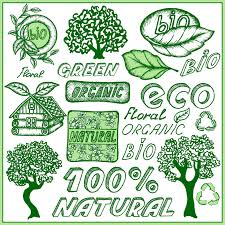
As a packaging designer and nature lover, I dream of the day when material science and manufacturing can deliver on the promise of zero environmental impact, high performance, premium finish and low costs. Many breakthroughs have begun to deliver on the promise - PaperFoam, recycled PET (rPET), and polylactic acid (PLA), to name a few.
But many of these materials still cannot compete on performance, and especially not on price. On the opposite end of the spectrum, commodity materials markets have been flooded with new eastern manufacturers, increasing the global supply and significantly lowering commodity materials costs.
Add to that the light-weighting movement in plastics bottling and single-stream recycling. Both test the long-term financial viability of the recycled materials industry, which collects on volume and is paid by weight.
The viability of true sustainability is a complex economic challenge, and the ugly truth is that very few consumers, brand owners or municipalities are willing to pay the premium price for cutting-edge, sustainable packaging solutions.
True solutions will come through systems thinking, which requires the material suppliers, manufacturers, retailers, consumers and municipalities to share in the premium costs and labor required to design, collect, and recycle packaging materials.
Over time, sustainable materials will become more available and thus less costly — but what to do now?
The answer is threefold:
* Stop looking for space-aged materials that will save the day
* Do more with what we’ve got
* Design with intent
10 principles to design sustainable packaging with intent
1. Start with commodity materials that are commonly recycled at major municipalities: a) PET, b) HDPE, c) Aluminum, d) Glass, e) Paper , f) Paperboards.
2. Design the package from a single material.
Single-material packages are easier to identify and separate during recycling.
3. Focus on the product-to-package ratio. The package should be as small as possible while still protecting the product and providing adequate branding real estate.
4. Design for assembly at the point of manufacture. Think through the assembly steps, as well as the use of hand labor versus automation. The more efficient the better.
5. Avoid gluing and laminations. Laminations and glue make it impossible to separate materials for recycling, and can negatively impact what would be an environmentally friendly package.
6. Design for distribution. Design primary, secondary and tertiary package from the beginning, looking to optimize all package dimensions for pallet efficiency.
7. Eliminate secondary and tertiary packaging when possible. Look for opportunities to make the primary package more robust, as well as combining functions of shipper and POP displays.
8. Design for disassembly. The end user will ultimately be responsible for cleaning and separating the packaging components for end of life. Use of the How2Recycle label is helpful in communicating what to do.
9. Clearly mark the materials on the packaging components. Design in-mold recycle codes or labeling to let consumer know what the material is.
10. Use Lifecycle Assessment (LCA) . Only in understanding the entire supply chain do you fully understand the true benefits (or costs) of your packaging materials.
Improvements in distribution could greatly offset a more premium material selection or increase in manufacturing complexity.

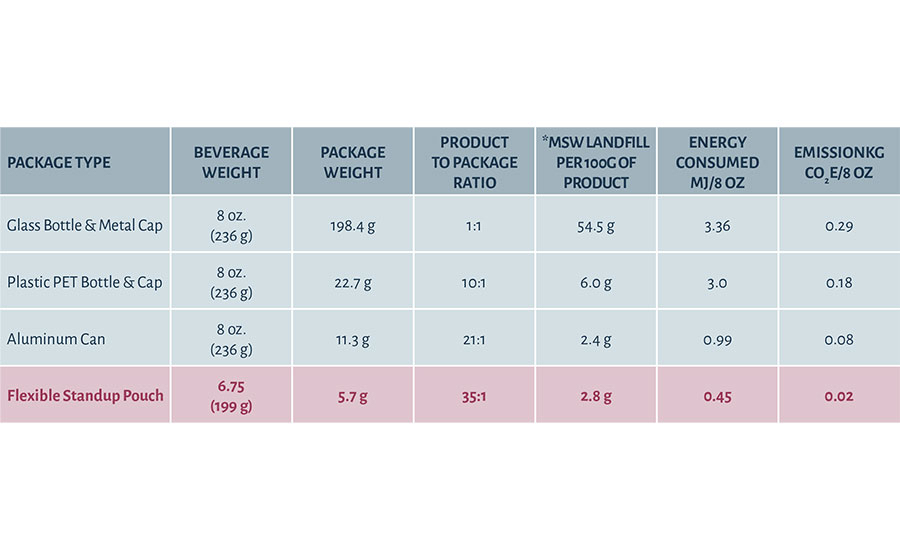
I hope for a brighter future when designing for sustainability can become a much more simple and straightforward methodology. Until the materials of the future significantly come down in costs, let’s keep designing with intent.

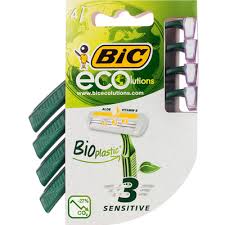
Edit By Bryan Shova
Industrial Design Director
Kaleidoscope
[ add comment ] ( 65 views ) | permalink |




 ( 3 / 2090 )
( 3 / 2090 )
Can you imagine a world without plastics? Use of this material is ingrained into our daily lives. It’s everywhere. Plastics are in our packaging, clothing, furniture, cars and more. Unfortunately it’s also found in soil, rivers, oceans and even our food.
Use of plastic packaging continues to grow because it is durable, lightweight, versatile and cost- effective. However, products and materials that have been successfully used for many years can become social pariahs. These days, it seems, the use of plastics in packaging is coming under increasing scrutiny.
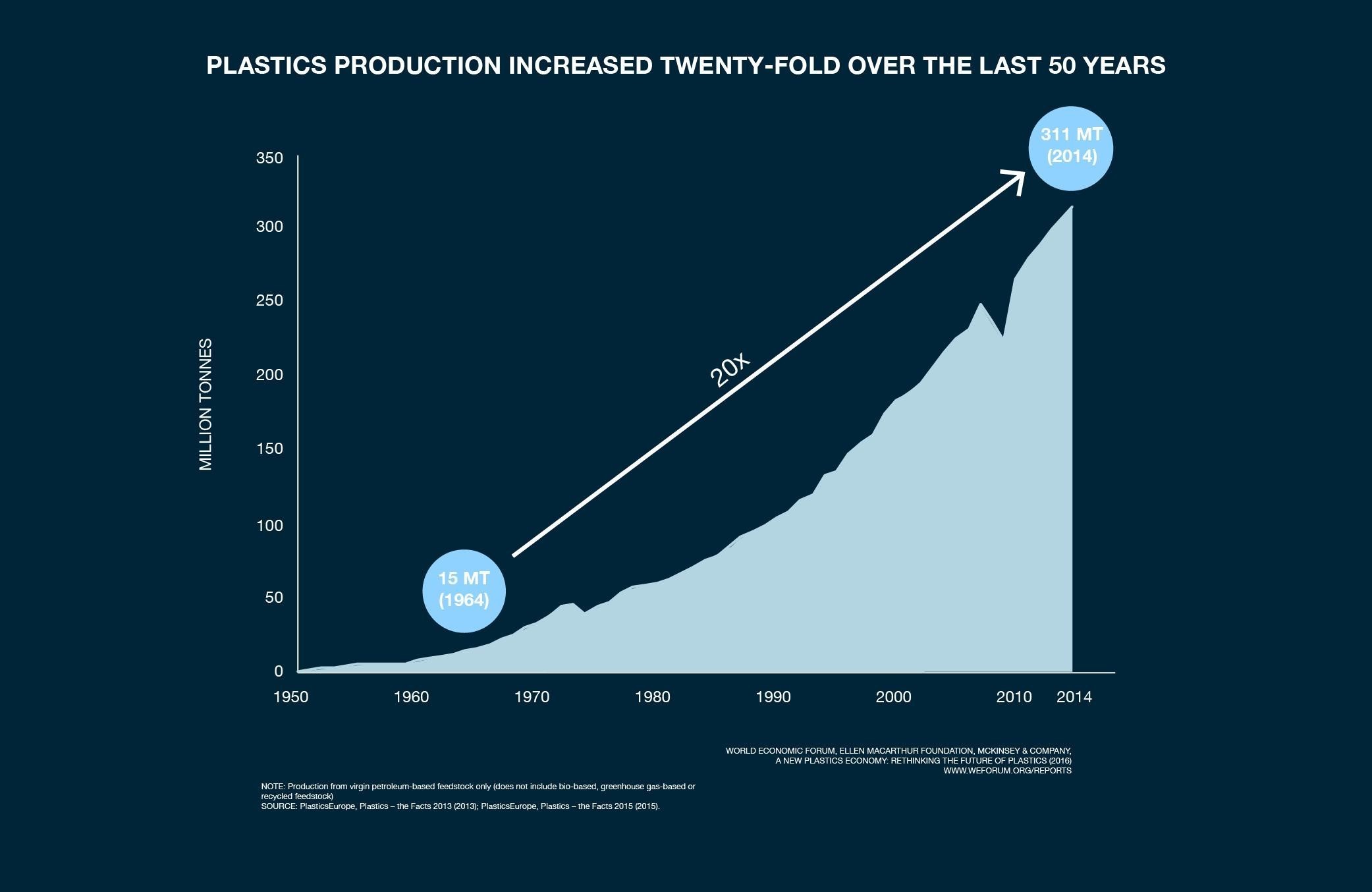
Plastics have considerable environmental impact. While most plastics can be recycled, many people don’t make the effort. The wide variety of resins used in packaging— often in combination —can complicate recycling efforts. Most people can’t identify the resin used unless the package has recycling prompts. One of the biggest concerns is that most plastics are not biodegradable. Consequently, plastics continue to build up, contaminating the environment and damaging food resources.

Pressure is on to either stop using plastic, change the types of plastic being used or make sure the material is easily biodegradable or recyclable. What is the industry to do? Several global consumer packaged goods companies have recently announced plans to make their packaging 100 percent reusable, recyclable or compostable within the next few years. One major U.K. retailer has gone even further, announcing that by 2023 it aims to have eliminated all plastic packaging from its store brand products.
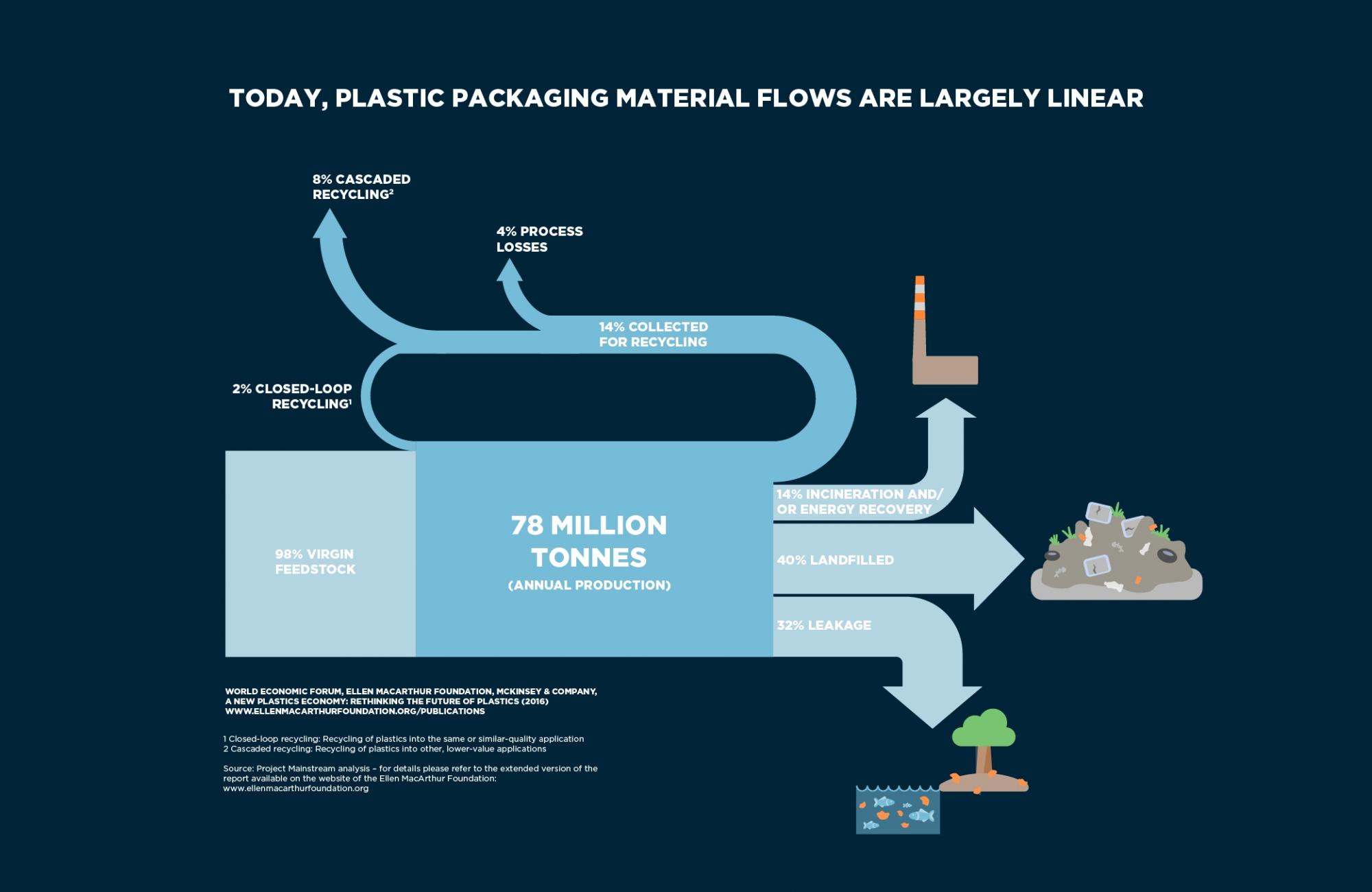
These are noble goals indeed. Surely, they can only be achieved through collaboration across the industry. Use of some types, such as polystyrene, may be eliminated altogether. Single-resin structures with enhanced barrier properties and transparency may be developed. But a world without plastic? Not likely.
Edit by
JOHN KALKOWSKI
Packaging strategies
March 2018
[ add comment ] ( 578 views ) | permalink |




 ( 2.9 / 1988 )
( 2.9 / 1988 )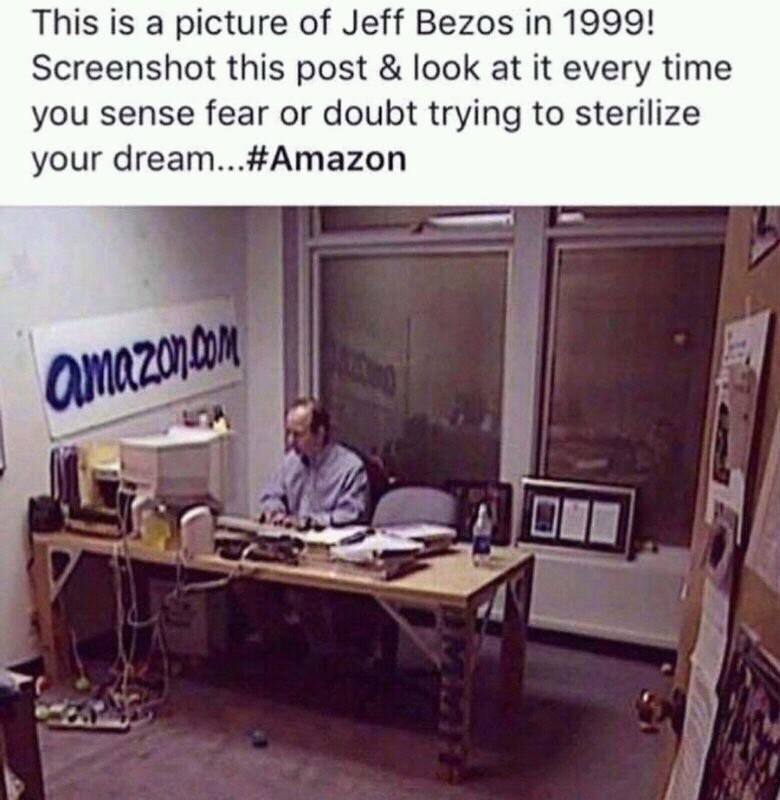
[ add comment ] ( 58 views ) | permalink |




 ( 3 / 1735 )
( 3 / 1735 )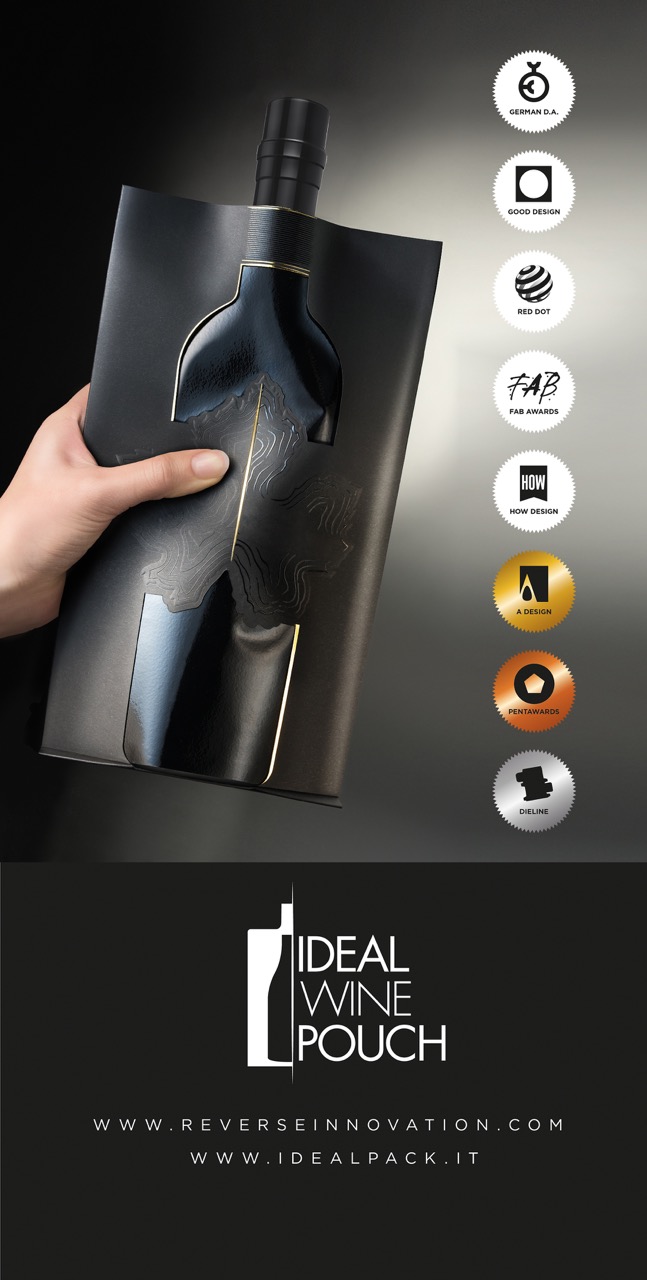
One year ago IDEALPACK has decided to invest in a new "innovative flexible packaging format", that We have branded as IDEAL WINE POUCH.
After one year of intense activities and investments , in collaboration of my partner REVERSE INNOVATION , we are happy to say that a " Dream come true" and we are happy and proud to present it for the first time in the market at the next VINITALY 2018 ( Verona, 15-18 April 2018) !
Don't miss it.
Remember that :
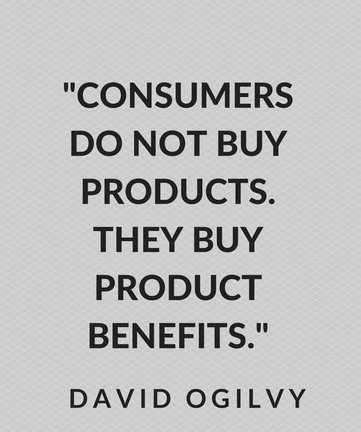
[ add comment ] ( 54 views ) | permalink |




 ( 2.9 / 934 )
( 2.9 / 934 )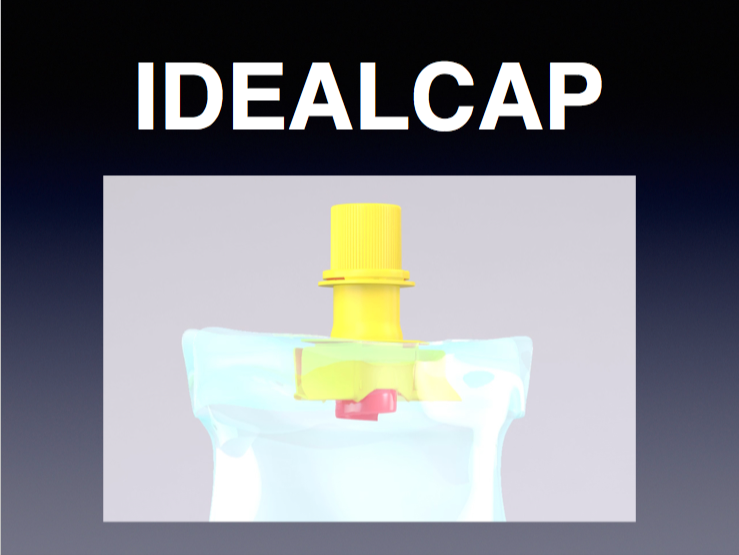
Idealpack general manager Giulio Ghisolfi announced a breakthrough in flexible packaging in the 2017 National Technical Forums at Auspack.
Idealpack has introduced a packaging solution which it claims will improve the application of reclosable spouts on aseptically filled stand-up pouches (SUPs).
According to GM Giulio Ghisolfi, the Aseptic Spouted Pouch (ASP), which launched for the first time in Australia at Auspack, is based on the idea of creating a new double-gusset pouch with an external piercing spout (IDEALCAP).
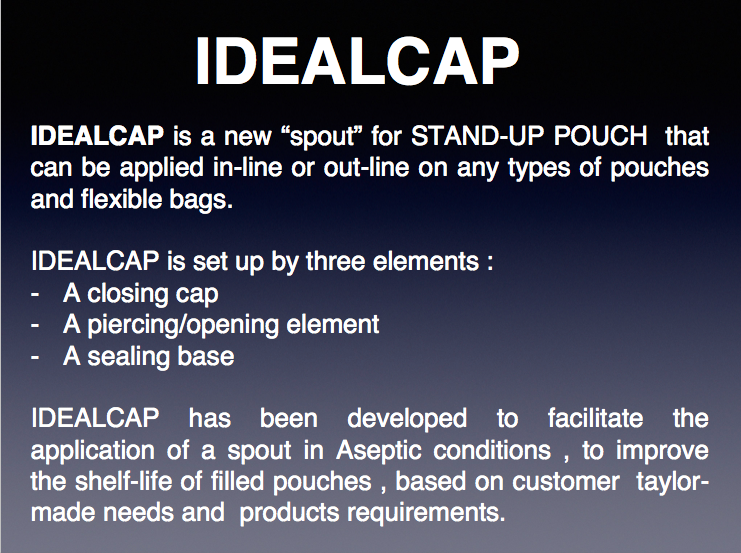
Ghisolfi says this application offers quality standards, efficiency, and an increase in shelf life.
“The filling line using this IDEALCAP spout, offers high productivity at over 250 pieces a minute, and the lowest possible head space in the pouch," he says.
The ASP solution suits food products in the baby and children’s market, housing such things as organic fruit and vegetables.
It also can be used to pack coconut water “with particulates”, as well as ready-made meals and condiments.
The solution is licensed to The Australian Pouch Company, otherwise known as Auspouch, for Oceania markets.
According to the company, the technology prevents sealing spout problems, which may occur during the filling stage on existing HFFS machines which are difficult to keep perfectly decontaminated.
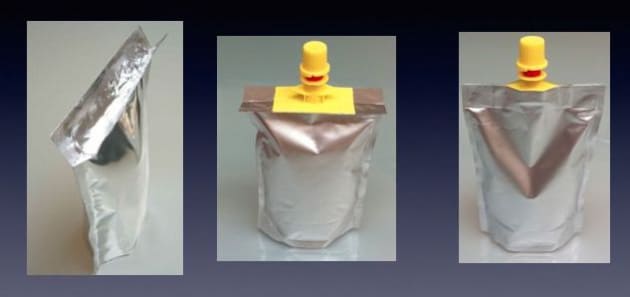
“The solution is light, versatile, and flexible, and adaptable to different processes,” Ghisolfi says.
The aseptic pouch avoids the need for preservatives , eliminate Oxidation inside the closed pack and ensures a sterilised package.
Edit By Alison Leader - Packagingnews
[ add comment ] ( 99 views ) | permalink |




 ( 3 / 2076 )
( 3 / 2076 )

 Calendar
Calendar